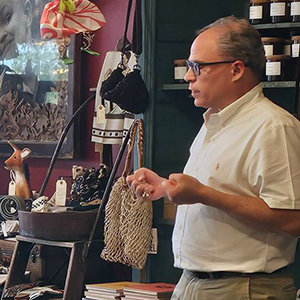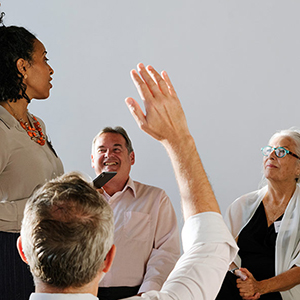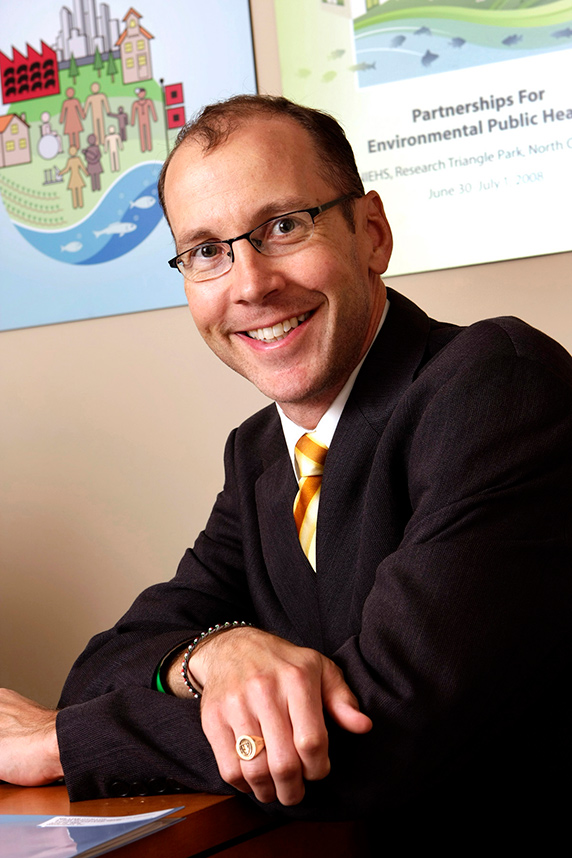 O’Fallon directs PEPH and participated in a panel on citizen science in public health research. (Photo courtesy of Steve McCaw)
O’Fallon directs PEPH and participated in a panel on citizen science in public health research. (Photo courtesy of Steve McCaw)NIEHS and Partnerships for Environmental Public Health (PEPH) grantees were actively involved at CitSci 2019, the biennial conference held by the Citizen Science Association. This year the event was held March 13-17 in Raleigh, North Carolina. Several sessions highlighted the many ways that citizen science contributes to environmental health research.
“We’ve been supporting community-engaged research approaches and environmental justice since the late 1990s, so this year’s Citizen Science Association meeting focus was a natural fit for what a lot of our current and past grantees are doing” said PEPH coordinator Liam O’Fallon.
The more than 800 conference attendees from across the country and around the world were treated to several presentations that provided specific examples of NIEHS-supported citizen science approaches. Citizens do more than contribute to science. They inform research questions, and their work often directly benefits their communities.
“The public is becoming more aware that there are threats in the environment,” noted Megan Hughes, STEM [science, technology, engineering, and math] Diversity Program Manager and Environmental Health Educator at the University of North Carolina (UNC) Institute for the Environment. “Citizen science can be used as an approach to help [the public] quantify those threats and to understand them better, so that they can take protective actions.”
It’s the kits
Hughes led a session on four interactive kits that were designed to build environmental health literacy for a wide range of community audiences. Greater environmental health literacy is good preparation for involvement in environmental health-focused projects.
The kits address topics such as lead in household water, groundwater contamination, and household exposure to lead and pesticides. They were developed by Science Take-Out with support from an NIEHS small business grant.
 Audience members had a hands-on look at samples of the Science Take-Out kits. (Photo courtesy of Ernie Hood)
Audience members had a hands-on look at samples of the Science Take-Out kits. (Photo courtesy of Ernie Hood)Air quality collaboration
The Imperial County Community Air Monitoring Network would not exist at all without significant involvement by area citizens. The rural California county experiences consistently high levels of air pollution, accompanied by high rates of asthma hospitalization and emergency room visits by school-aged children.
To address the problem, an NIEHS-funded project built on a long-standing collaboration between the community group Comite Civico del Valle and the California Environmental Health Tracking Program. Community participants from 11 neighborhoods informed the placement of 40 low-cost portable air monitors that collect real-time data on levels of airborne particulate matter.
Although the original program is completed, community members remain committed as it expands to nearby areas. “They’re still participating at local meetings, where we discuss air quality issues and any pollution that matters that happens in Imperial,” said air monitoring technician Christian Torres, who presented the project at the conference.
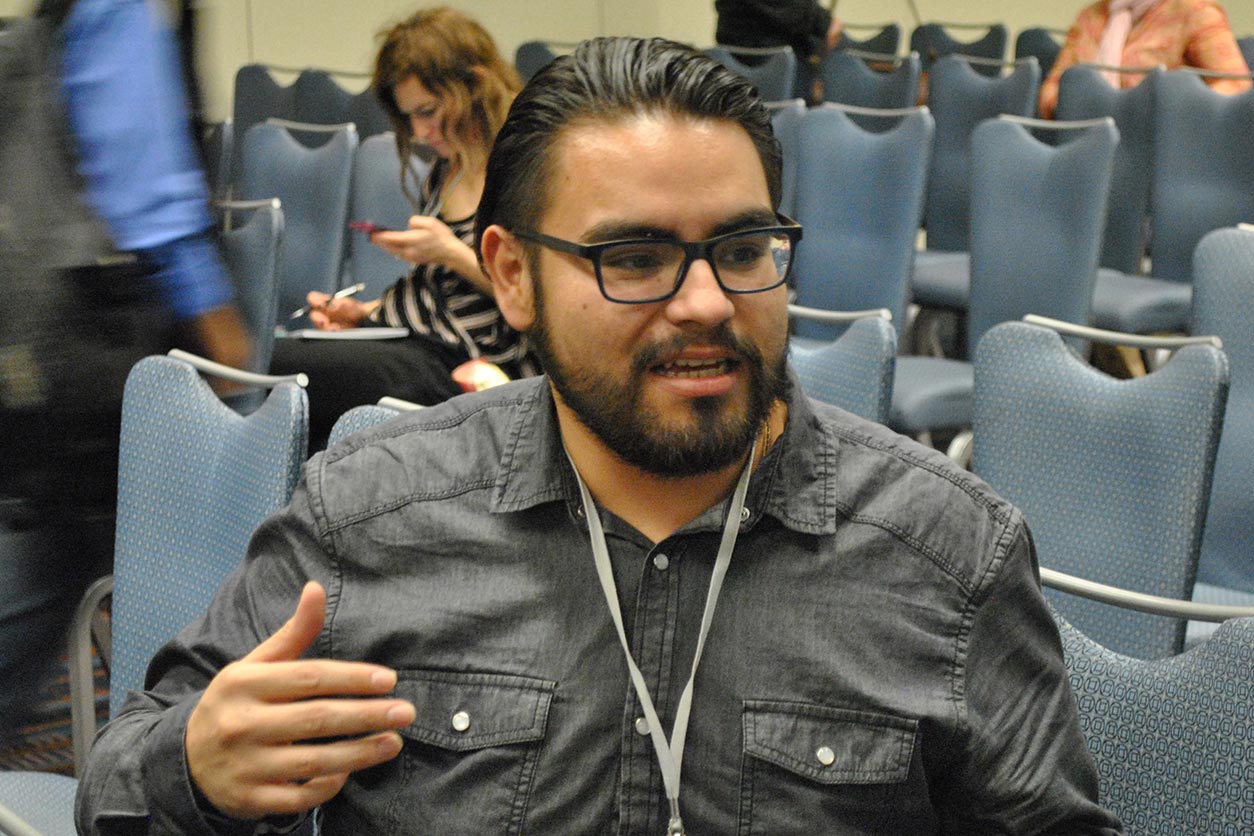 Torres said that his organization is now providing technical assistance to other groups throughout California working on their own versions of community air monitoring. (Photo courtesy of Ernie Hood)
Torres said that his organization is now providing technical assistance to other groups throughout California working on their own versions of community air monitoring. (Photo courtesy of Ernie Hood)Digging wells
An ongoing project in North Carolina uses citizen scientists to study well water contamination in environmental justice communities across the state. These communities have historically faced disproportionate burdens of pollution.
“We’ve been able to improve the power of our study by relying more and more on citizen scientists,” said Andrew George, Ph.D., community engagement coordinator at the UNC Institute for the Environment.
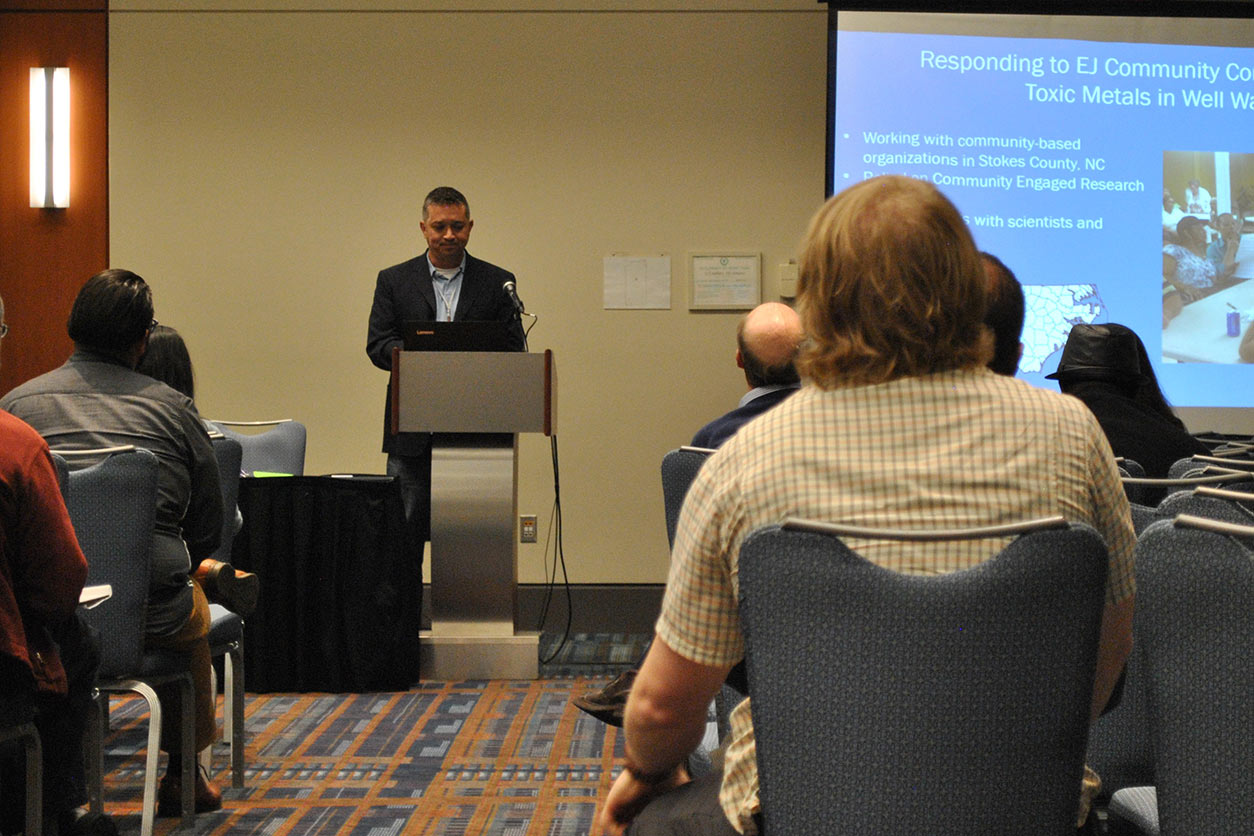 George helps researchers build relationships and trust with community members and helps the community understand what researchers are trying to accomplish. (Photo courtesy of Ernie Hood)
George helps researchers build relationships and trust with community members and helps the community understand what researchers are trying to accomplish. (Photo courtesy of Ernie Hood)Overall, roughly one-third of North Carolinians get their drinking water from a well, and according to George, approximately one-quarter of those wells have some kind of contaminant in the water, such as hexavalent chromium, lead, or arsenic.
“Over the past four years, we’ve worked with folks in the environmental justice communities, building more citizen engagement and understanding of what we find in their wells, and then thinking about solutions if we do find something,” said George.
(Ernie Hood is a contract writer for the NIEHS Office of Communications and Public Liaison.)
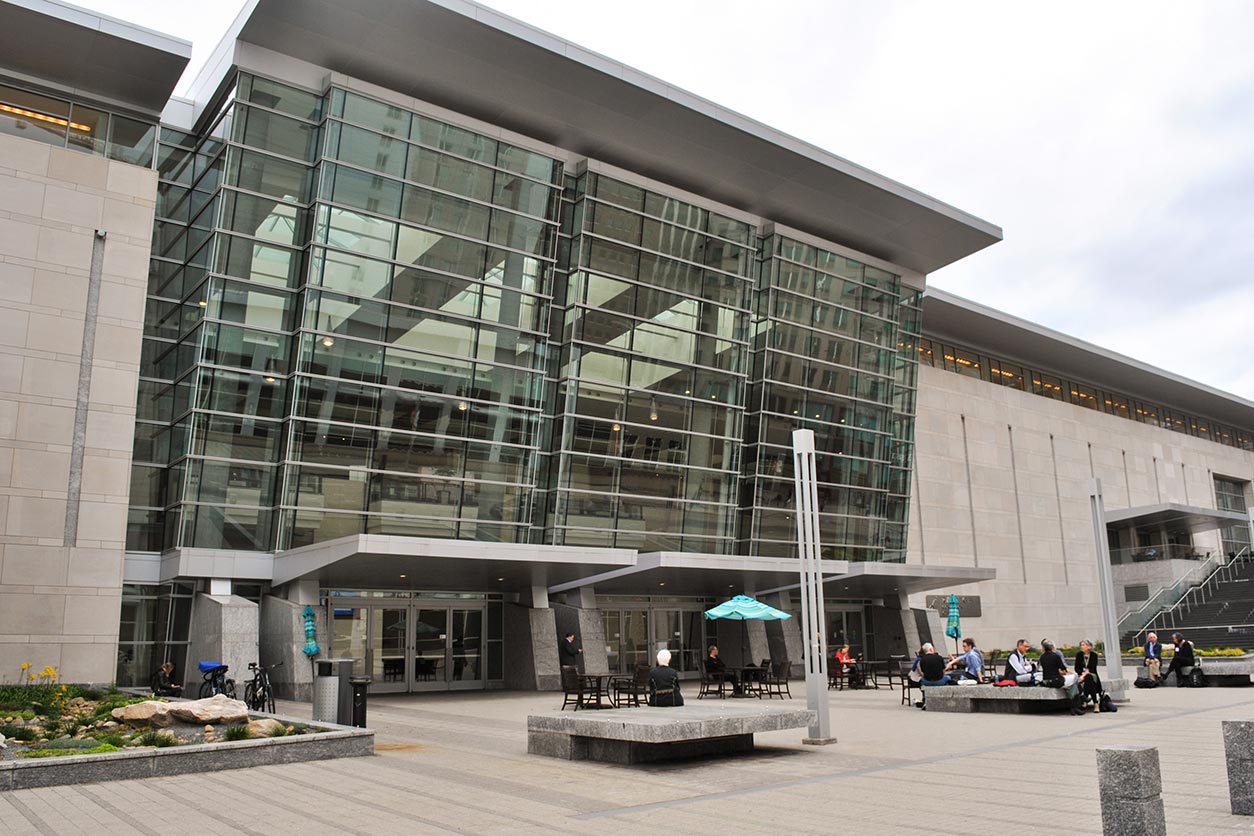
CitSci 2019 was held at the Raleigh Convention Center, a sprawling facility in downtown Raleigh well-suited to the needs of the biennial meeting.





